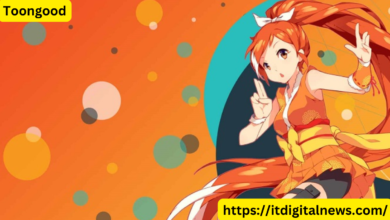In the age of social media, the rise of influencers has been nothing short of a revolution. These individuals, typically celebrated for their online presence, have the ability to impact millions with a simple post, video, or tweet. However, the trend of influencers pushing boundaries and creating more extreme or controversial content has sparked considerable debate. One such phenomenon that has caught the attention of the masses is the rise of “InfluencersGoneWild” — a term that encapsulates influencers who push the limits of traditional online personas, often in ways that are more provocative or sensational than ever before.
The Origins of InfluencersGoneWild
The concept of influencers is not new. Since the early days of platforms like Instagram, YouTube, and TikTok, influencers have been able to amass large followings through curated content that appeals to specific demographics. Initially, influencers focused on beauty, fitness, fashion, and lifestyle topics. However, as the social media landscape grew more saturated, many influencers began searching for new ways to stand out in an increasingly crowded space.
The term “InfluencersGoneWild” likely emerged as a result of these efforts. Influencers who once operated within the more conventional norms of their respective niches started to take risks with their content, often stepping into controversial territories to garner attention. This could involve showing more personal or risqué aspects of their lives, engaging in outlandish stunts, or openly criticizing societal norms. Essentially, it’s a way for influencers to create a “shock factor” that boosts engagement, sometimes at the cost of their own image or public opinion.
While the rise of “InfluencersGoneWild” is a relatively recent development, it represents a natural evolution of the influencer culture, where individuals strive for visibility, recognition, and ultimately, power over the online narrative. In some cases, these influencers take on a rebellious, unfiltered persona, which contrasts with the polished, curated images that once dominated social media.
The Appeal of Shock Content
One of the primary drivers behind the “InfluencersGoneWild” movement is the appeal of shock content. In an era where content saturation is at an all-time high, it has become increasingly difficult to stand out. In the past, influencers could rely on their beauty, personality, or expertise to capture the attention of their followers. But as more people entered the influencer space, it became harder to differentiate oneself from the crowd. This led to a shift in strategy for many influencers, who realized that pushing boundaries could result in a massive surge in visibility.
The appeal of shock content lies in its ability to evoke strong emotional responses from the audience. Whether it’s shock, laughter, disbelief, or anger, these emotions are powerful motivators for engagement. When an influencer posts something that shocks or surprises their followers, it creates a ripple effect. Followers may share the post, comment on it, or even create their own content in response, all of which amplify the influencer’s reach.
Moreover, shock content often generates buzz on multiple platforms, increasing the influencer’s visibility even further. For instance, an influencer might post a controversial video on TikTok, which could then be shared on Twitter, Instagram, and Facebook, reaching audiences across various platforms. This cross-platform sharing helps the influencer go viral, even if their content is only slightly outrageous.
The Risks Involved
While the allure of viral success can be tempting, there are significant risks associated with the “InfluencersGoneWild” approach. For one, the nature of this content can be polarizing. Influencers who push the limits of decency or engage in controversial behavior may alienate a portion of their audience. A loyal following that once supported them for their authenticity may begin to turn away if they feel the influencer has become too extreme or is prioritizing shock value over meaningful engagement.
Additionally, there are reputational risks. Some influencers who engage in wild or outrageous stunts may be accused of using controversial content for clout rather than contributing anything meaningful to the conversation. This can lead to a loss of credibility and authenticity, two qualities that are often seen as essential for long-term success as an influencer.
In some cases, influencers who adopt a more radical approach may even face consequences from brands or sponsorships. Brands that rely on a certain image or set of values may distance themselves from influencers whose content no longer aligns with their own identity. This can result in a loss of lucrative partnerships, which in turn affects the influencer’s revenue streams.
Another risk is the potential for personal harm. Extreme stunts or challenges that are often associated with the “InfluencersGoneWild” trend can sometimes backfire. There have been instances where influencers have injured themselves or others while attempting to create viral content. These incidents can have lasting effects on their health, both physically and mentally, and in some cases, could even result in legal consequences.
The Impact on Social Media Culture
The rise of influencers who engage in extreme content creation has undoubtedly affected the broader social media culture. On one hand, it has contributed to the normalization of more radical, unfiltered forms of self-expression. In many ways, this has democratized content creation, allowing people to express themselves in new and diverse ways. For some, this shift represents a much-needed departure from the perfectly curated, often unrealistic portrayals of life that dominated social media for years.
On the other hand, the prevalence of shocking or controversial content has also led to a growing sense of skepticism and cynicism. Many people are InfluencersGoneWild beginning to question the authenticity of influencers and their motives. It’s not uncommon to hear people express the belief that influencers are more interested in making money and gaining fame than in providing value to their audience.
The rise of influencers pushing the envelope has also led to an increase in social media regulation. Platforms like Instagram, TikTok, and YouTube have tightened their policies around what is considered acceptable content, particularly in relation to explicit or potentially harmful material. This has led to the banning or demonetization of some influencers who push the boundaries too far.
The Future of InfluencersGoneWild
As social media continues to evolve, the question remains: will the “InfluencersGoneWild” trend continue to thrive? Given the increasing demand for more extreme and sensational content, it seems likely that influencers will continue to push boundaries in an attempt to stay relevant. However, as platforms and audiences become more discerning, there may also be a shift toward more responsible and meaningful content creation.






